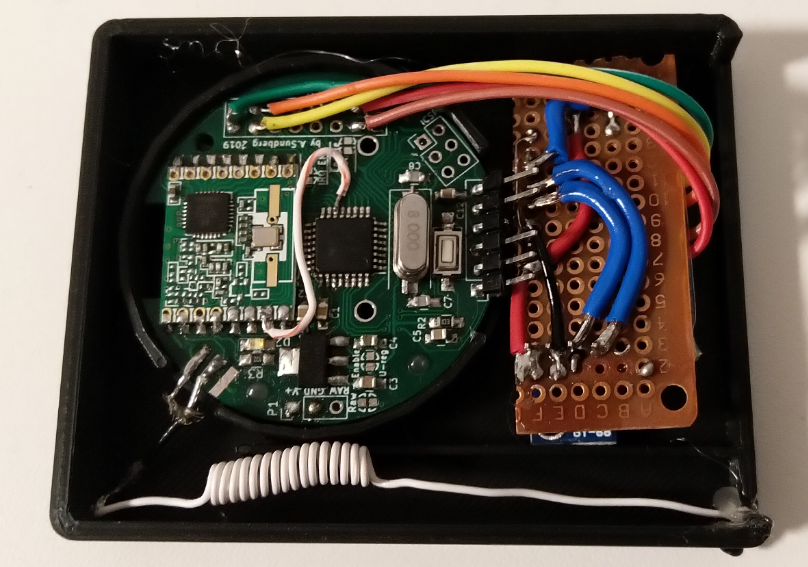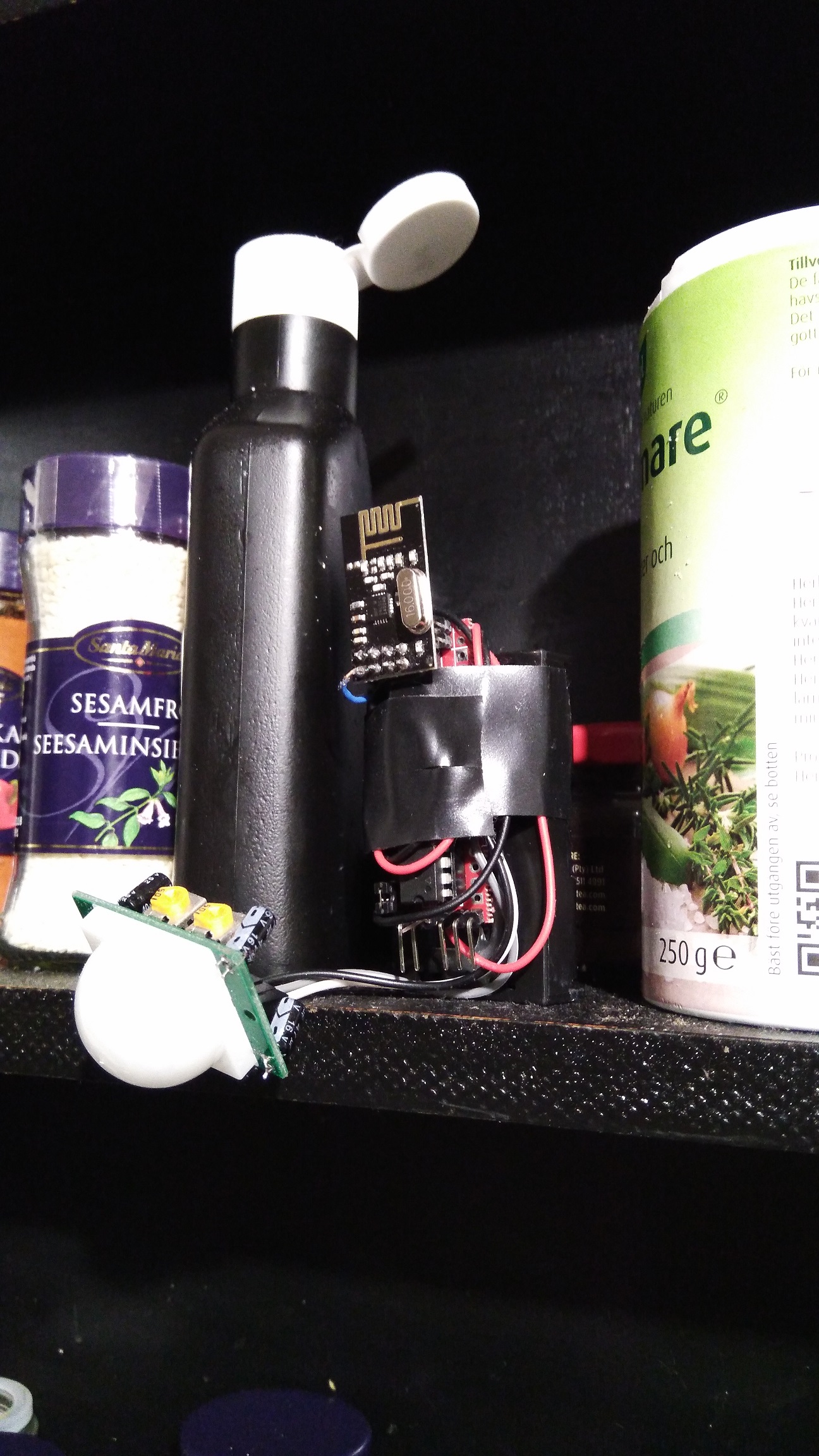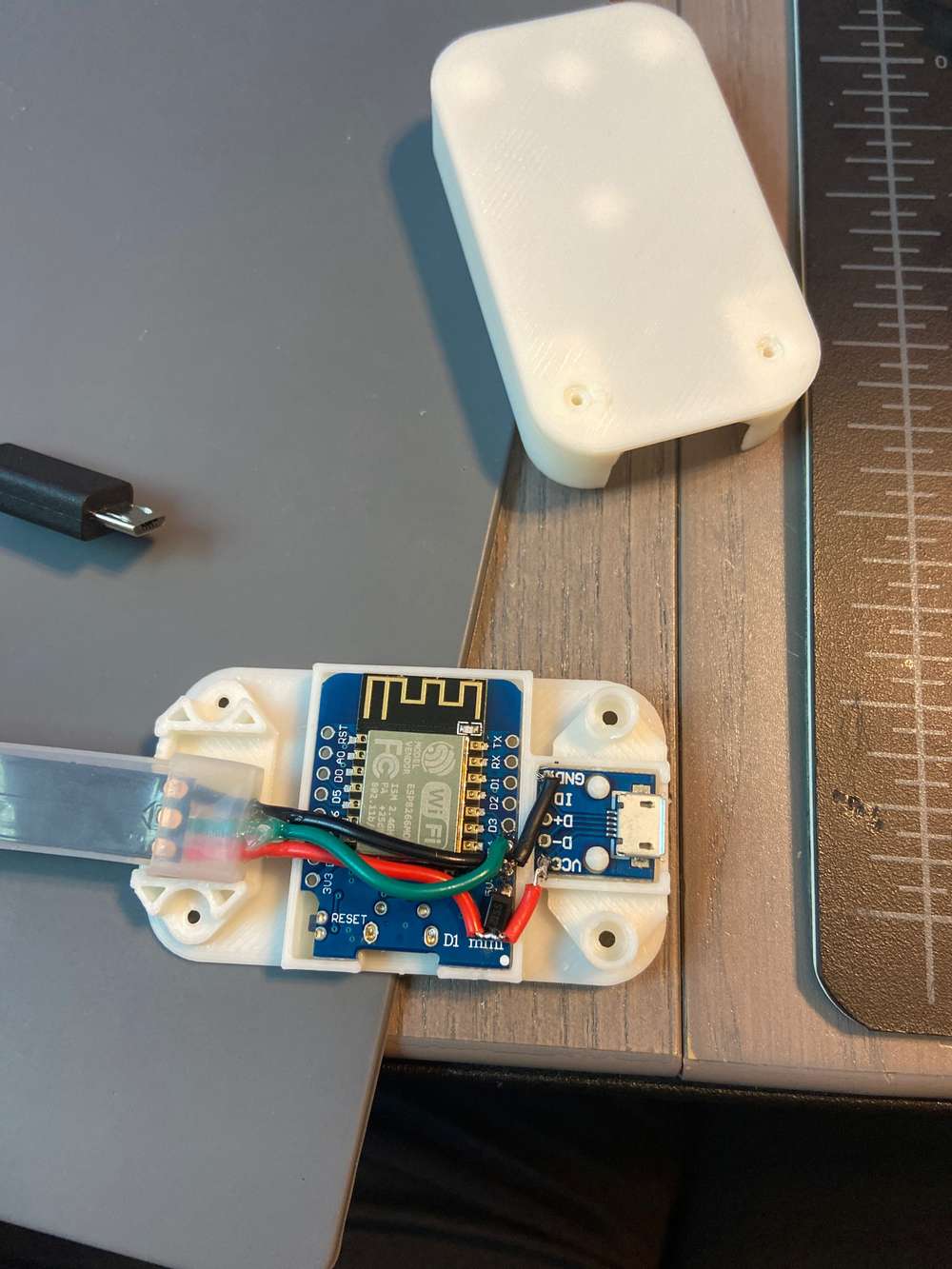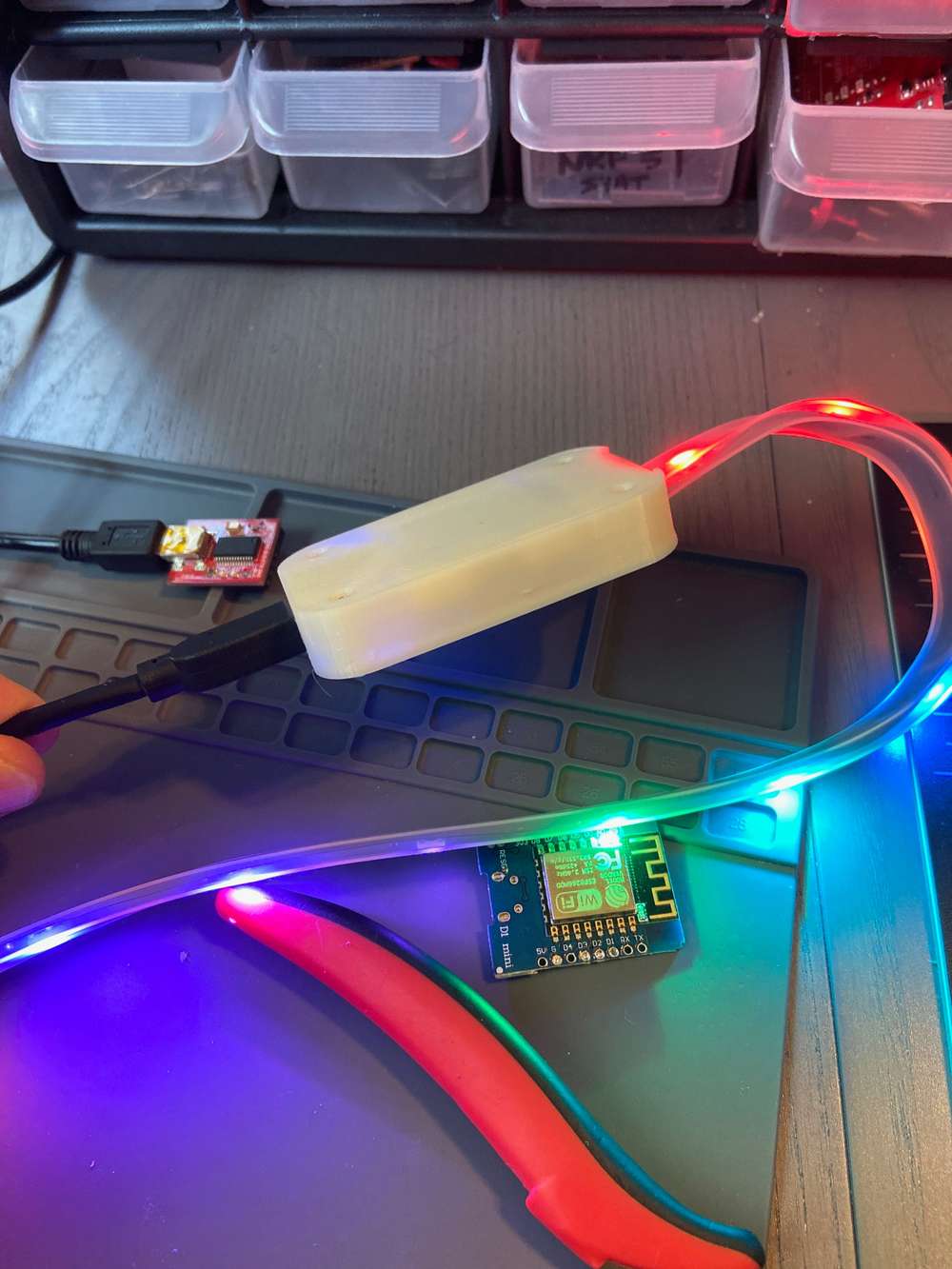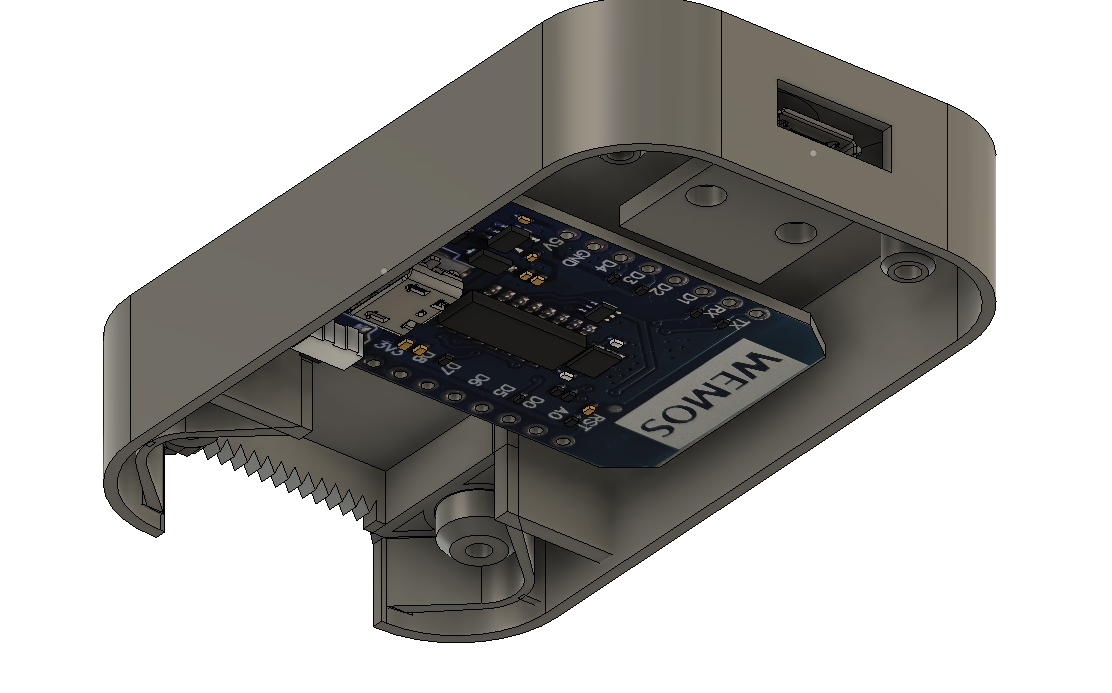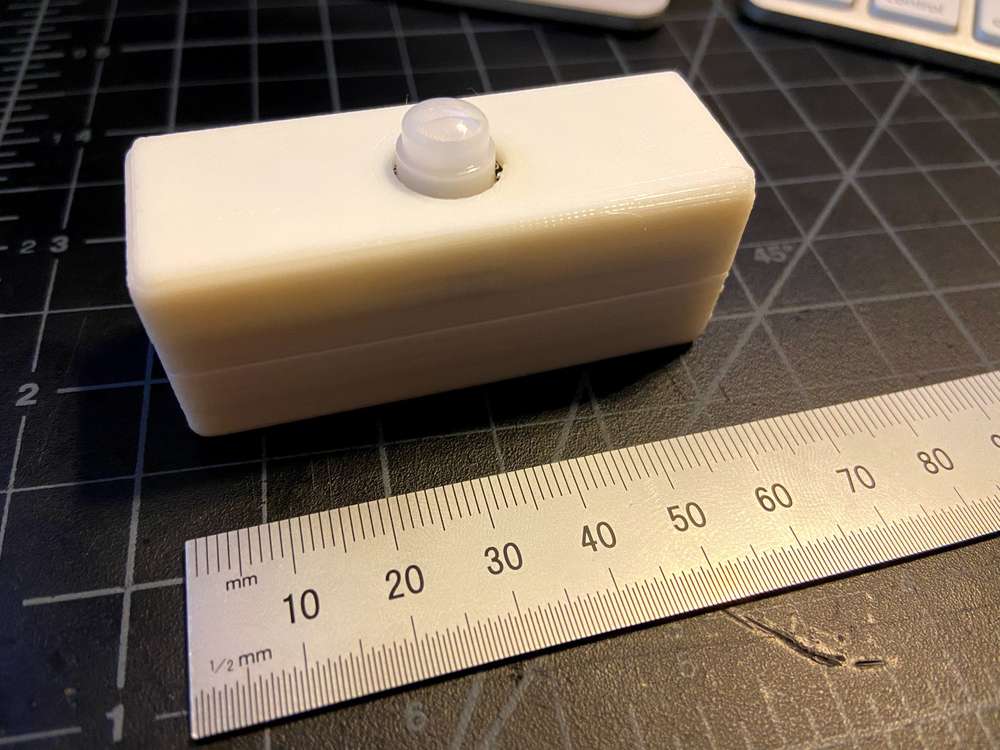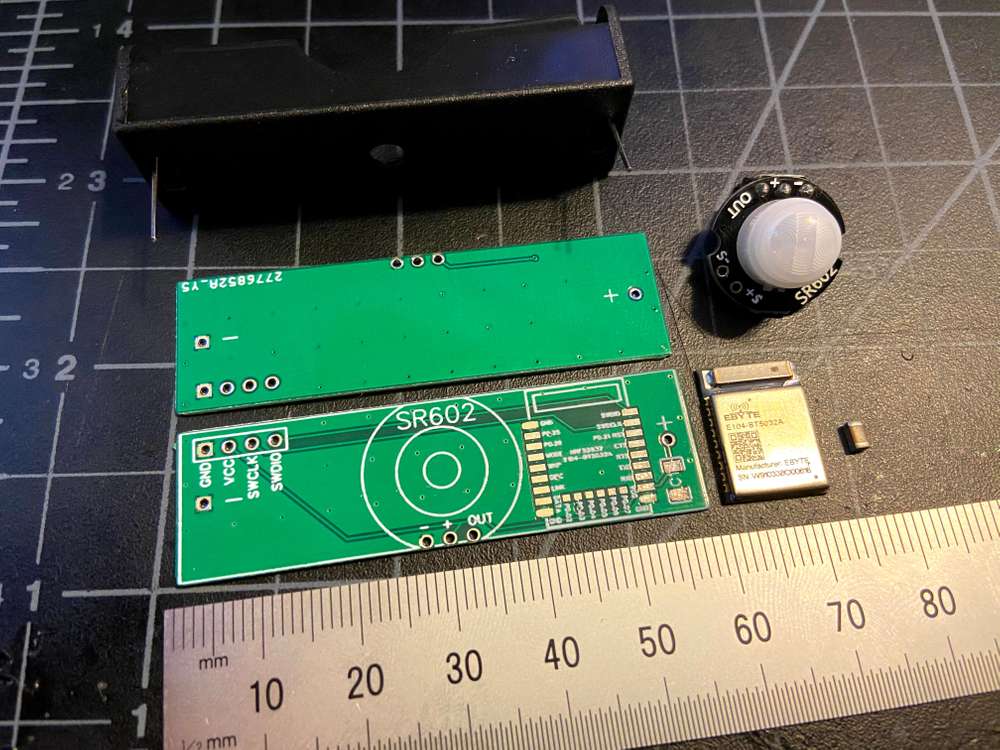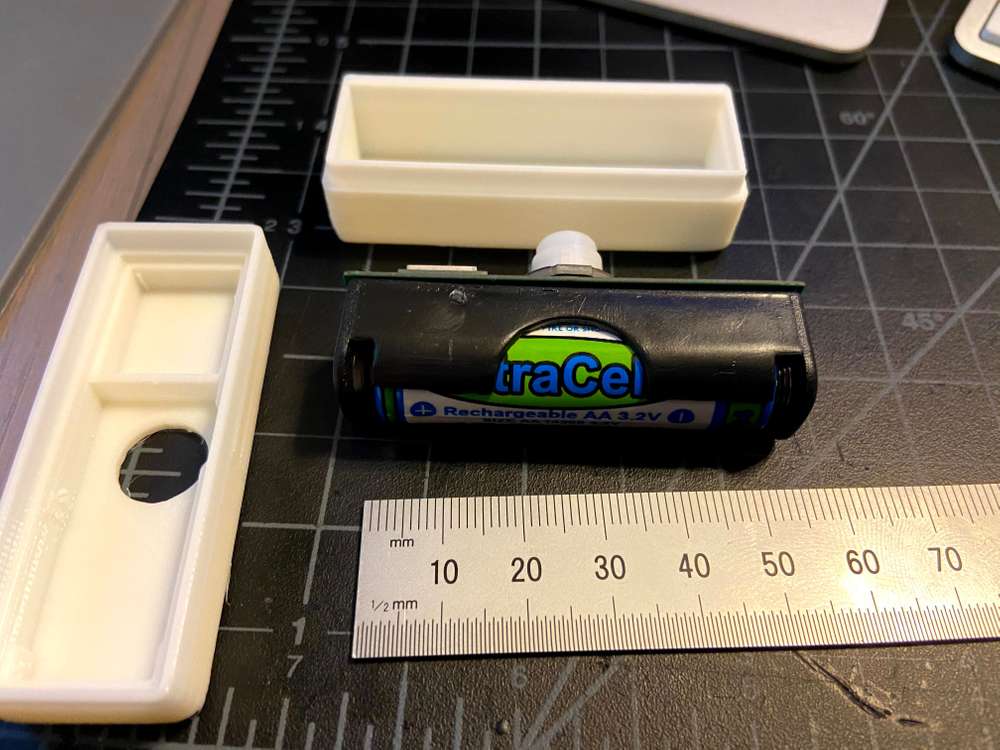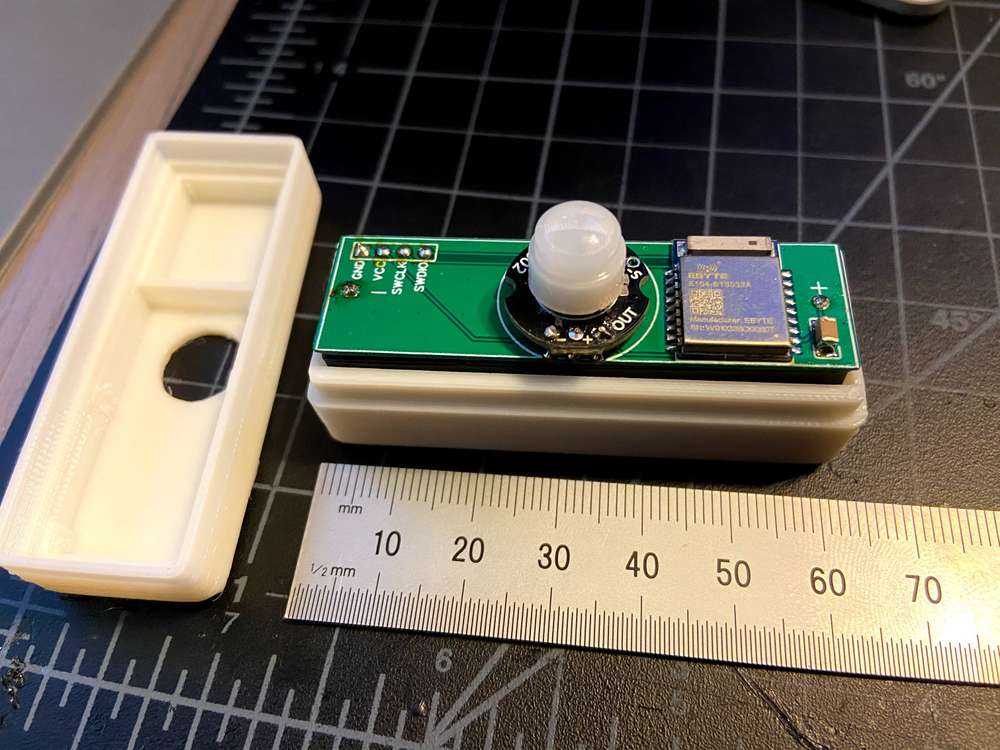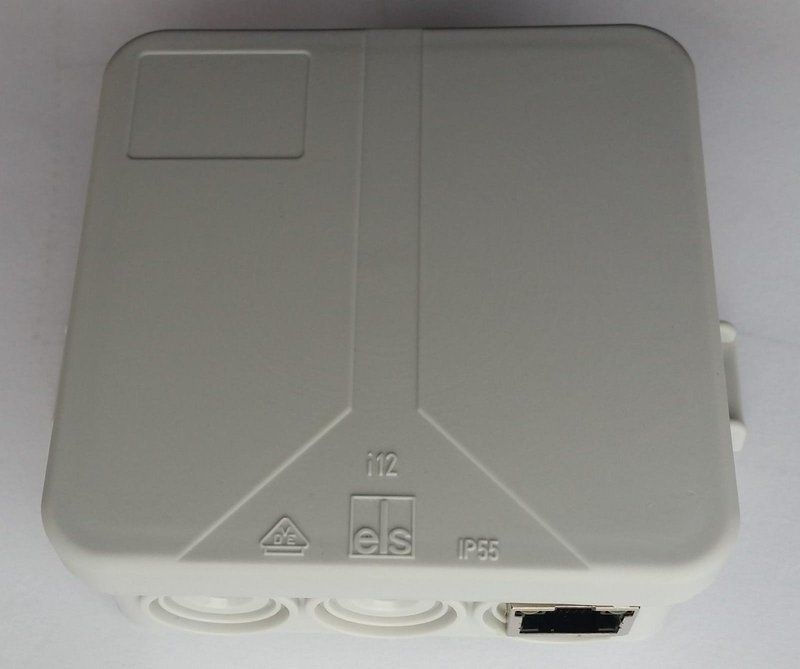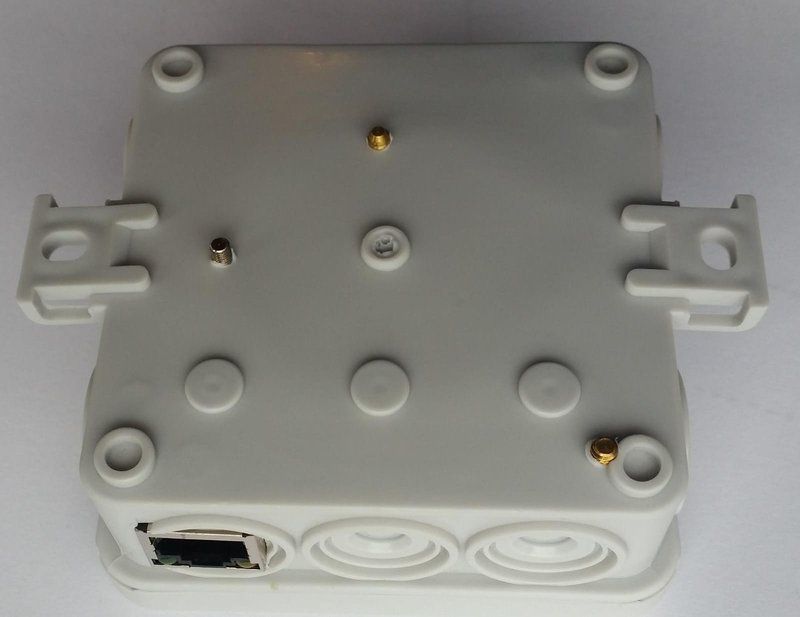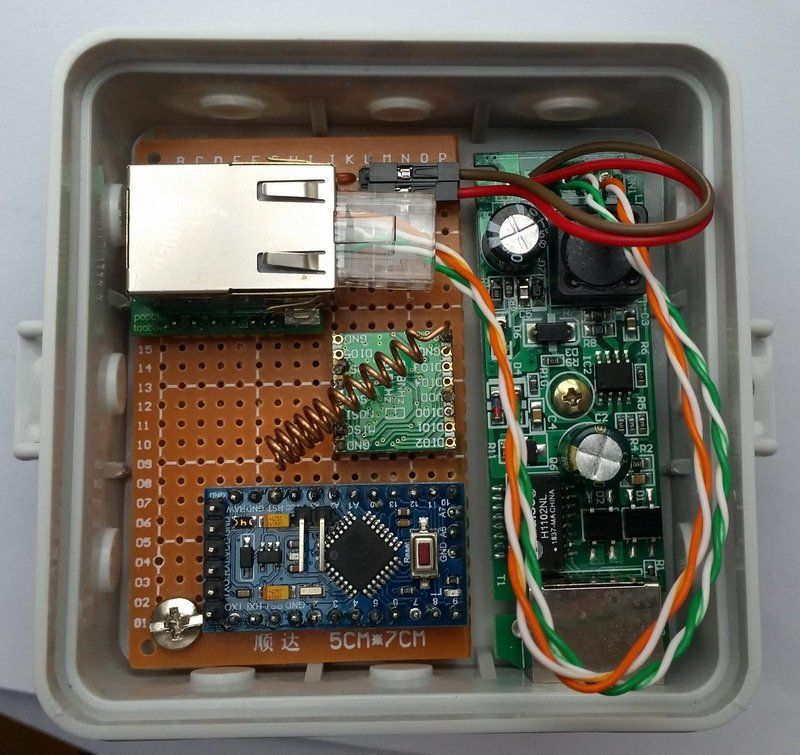What did you build today (Pictures) ?
-
My new gateway with leds for state and the only node I have: A wireless arcade button controller
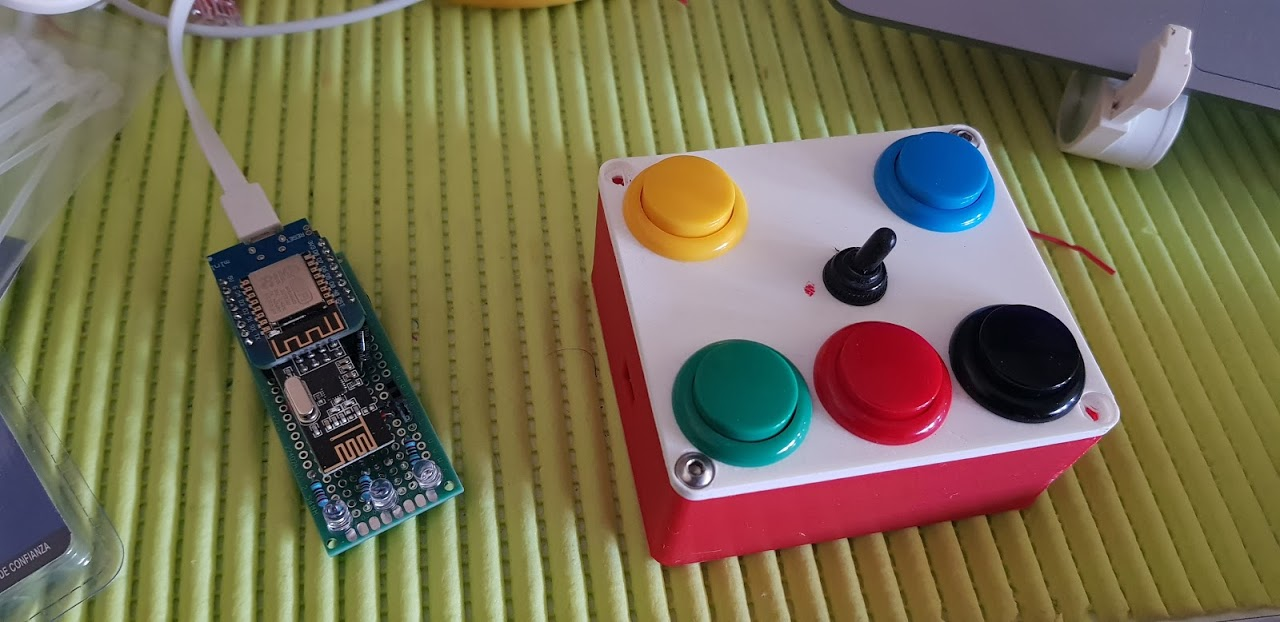
-
Well, it not really a build I plugged in wires, and copied code. Found a random usb charger and put it all in my workspace to be.
And I absolutely love this thing. Maximum of 3 hours work. I was having fun, so it could be more.
I considered that there could and should be a display on this thing, but not for now. I made this, because I have never experimented with temperature sensors and I just received a few. Now I can just see what happens with the temperature in there.
sensor is a AHT10 temperature and humidity.
http://www.aosong.com/m/en/products-40.html
I used this library: https://github.com/enjoyneering/AHT10
I repurposed Hek's DHT code, and swapped the readings with the AHT's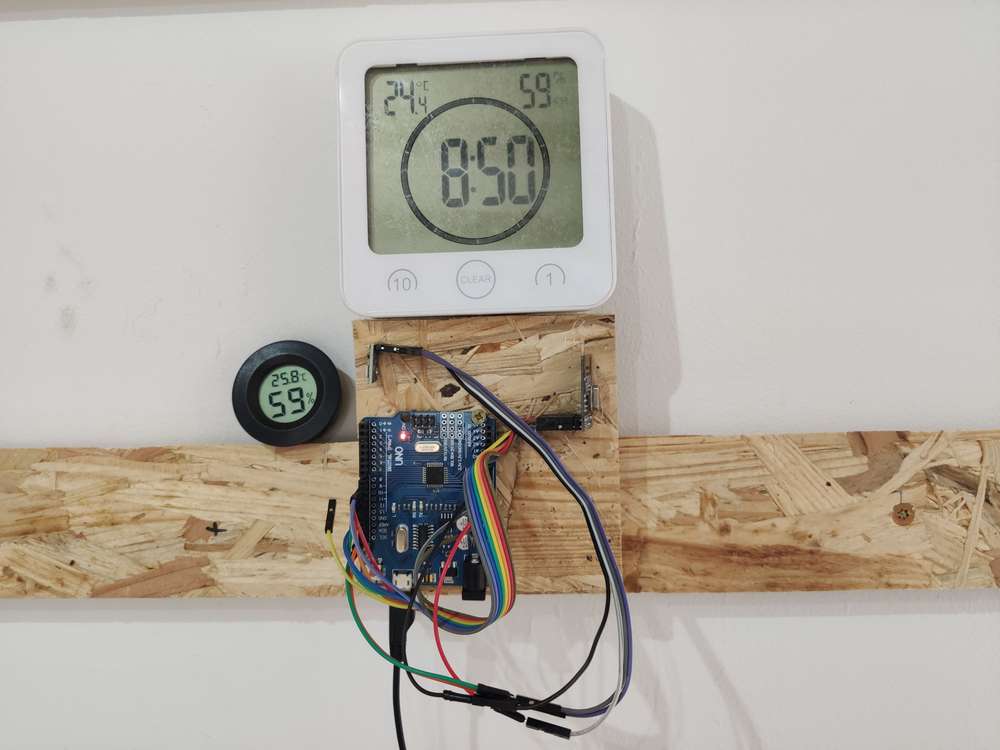
shed before
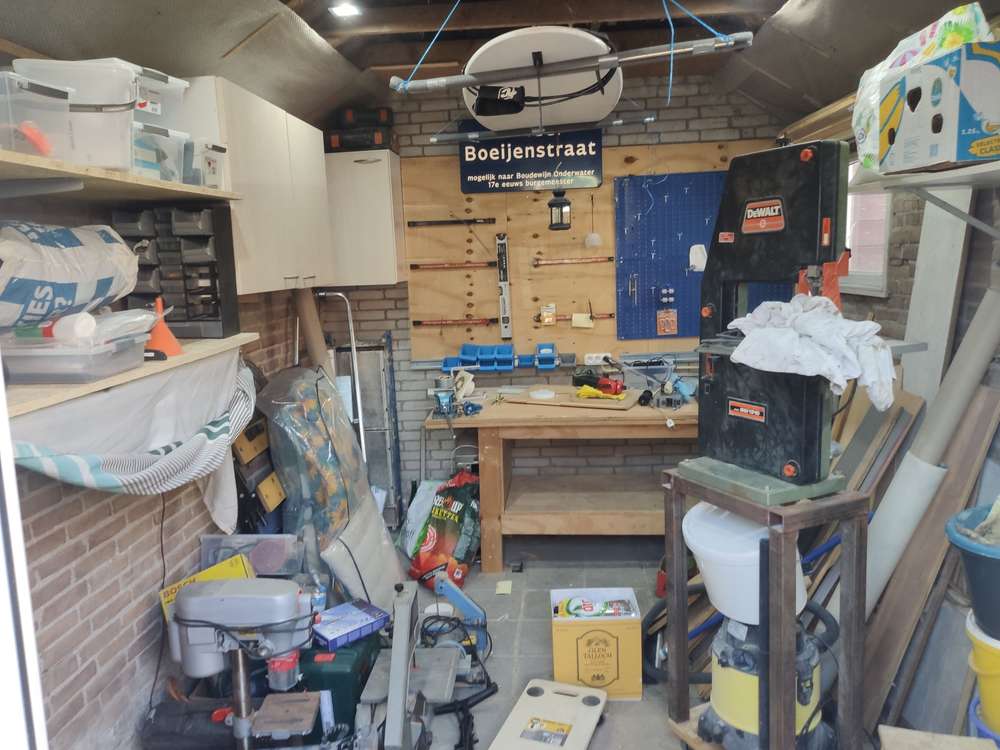
workspace after but still filling it.
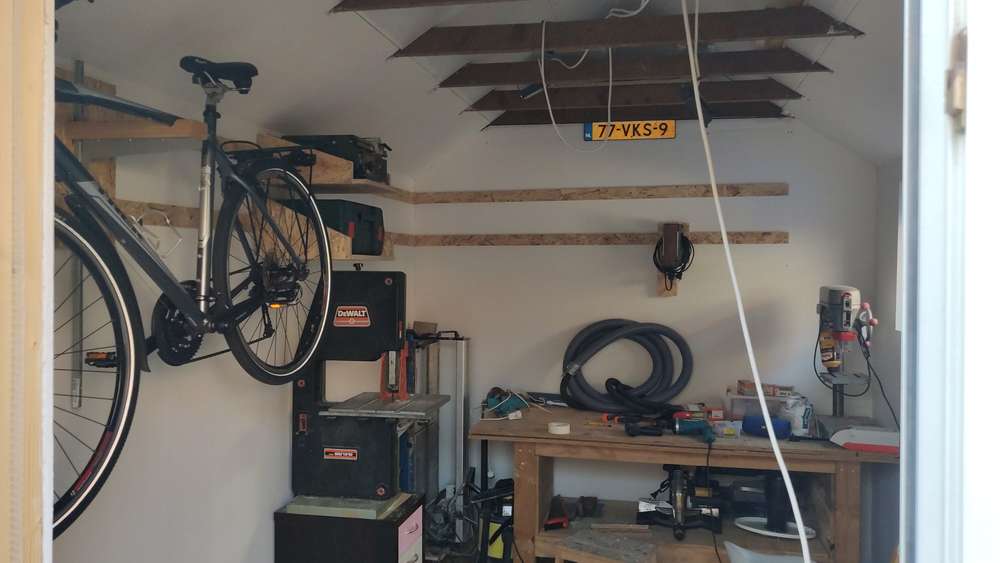
-
Today I've finally swapped my outdoor relay node with something descent.
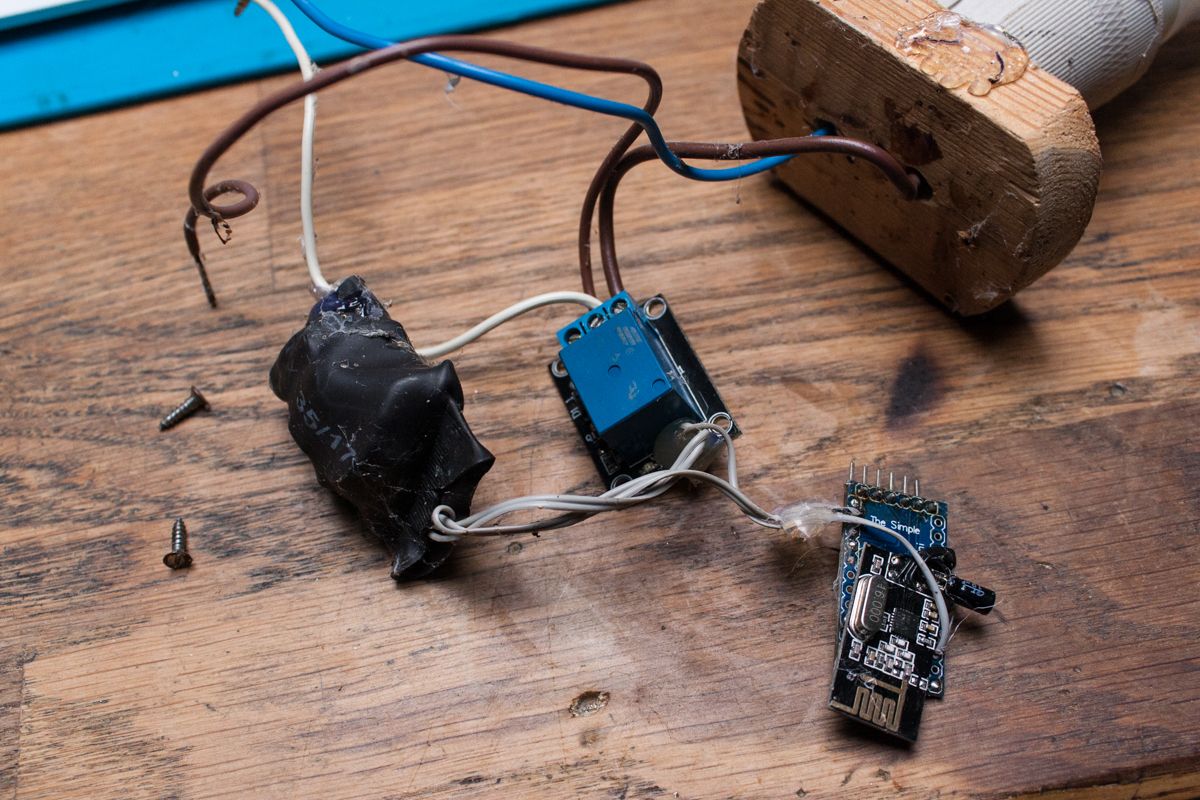
This was my very first mysensors node that I've built when I was only starting to mess with arduino, probably around four years ago.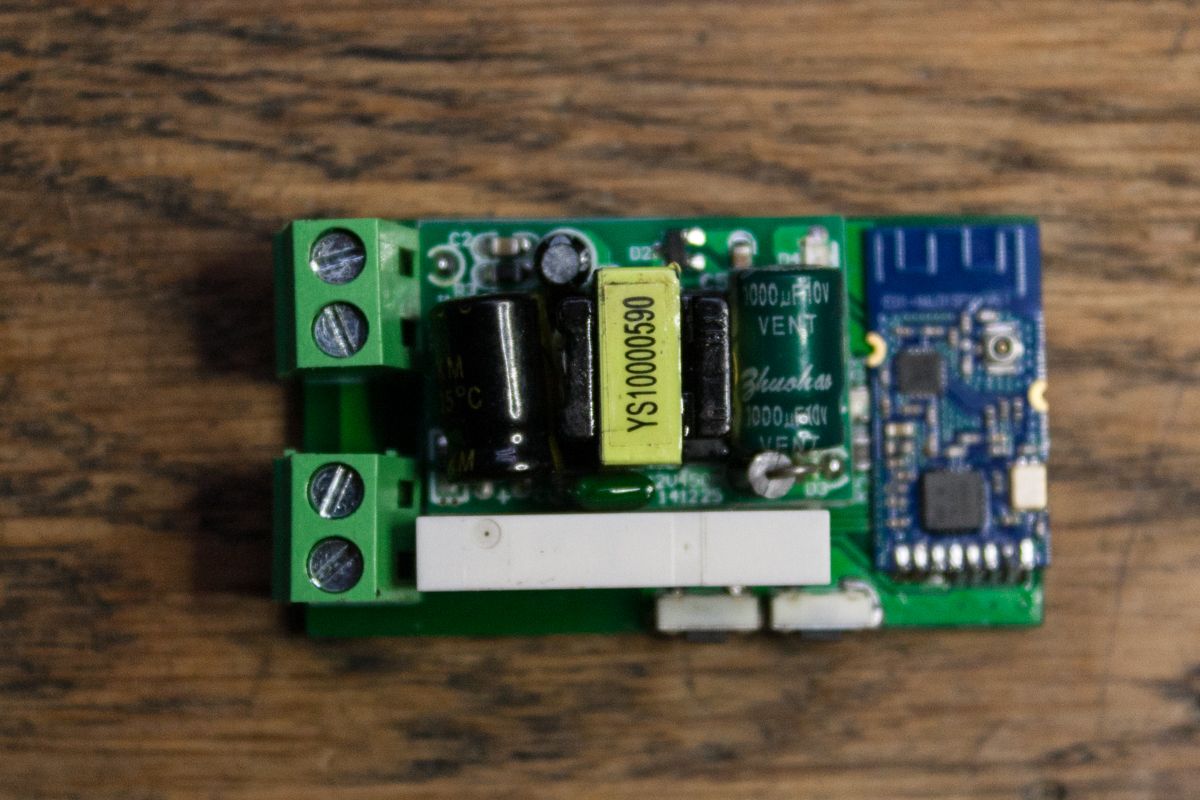
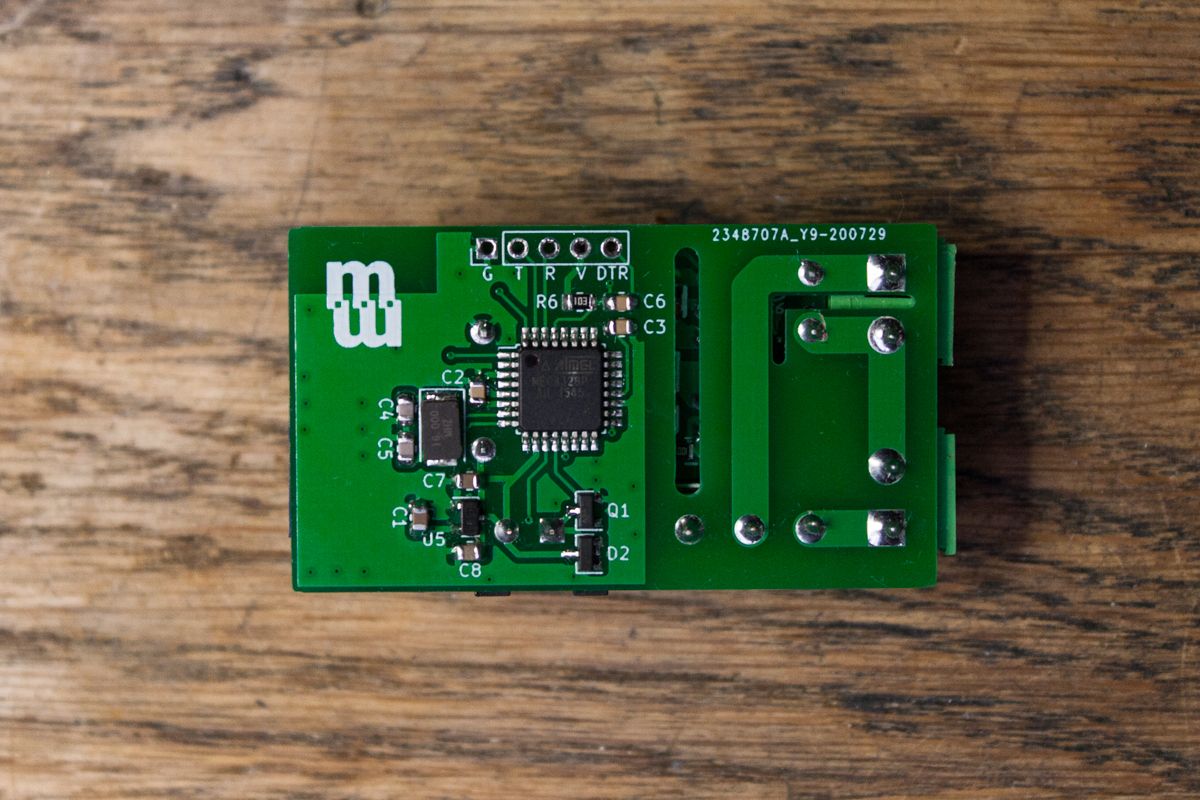
This board uses cheap 5v power supply and an amplified version of NRF24 module from Ebyte. It supposed to be poured with silicone ore resin, but I am yet to find suitable box, the size of this board appeared to be bigger then most of such cases designed for compound pouring. But I'm planning on making next version, with non-isolated power supply, which will help to achieve smaller size. -
My new project of a temperature and humidity sensor with an electronic ink display 1.02 Inch ( GDEW0102T4 ), very low power consumption, very small device.
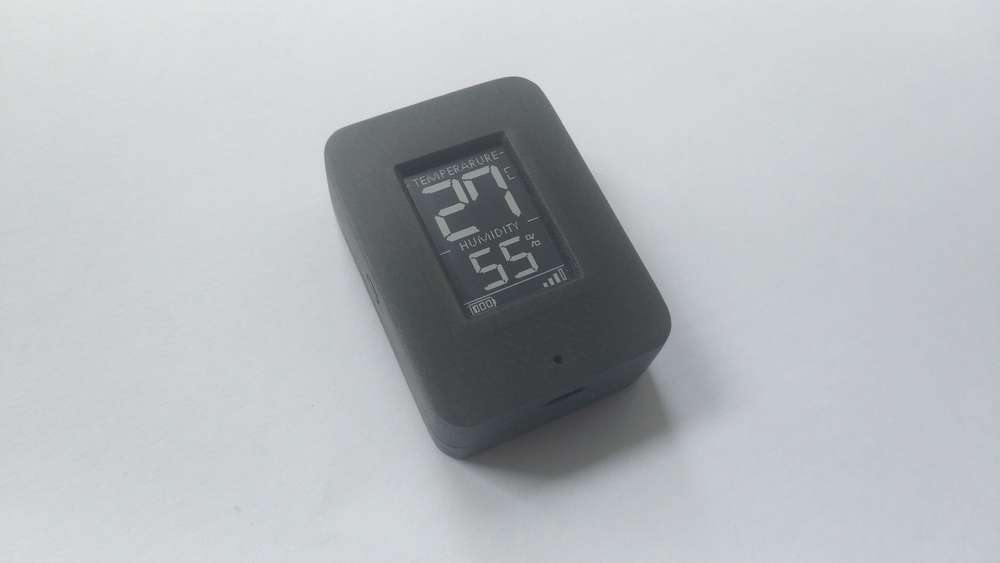
-
Very nice renderings.
W2812B uses about 50mA at full brightness, so you'd need a power supply that can deliver 7,500mA if you run the entire strip at maximum.
@mfalkvidd Yeah, I realize I can only use a portion of the strip, or keep it very dim. I actually bought this with the hopes of flashing with Tuya Convert, but turns out they switched to non ESP modules. So, I figured I would make my own.
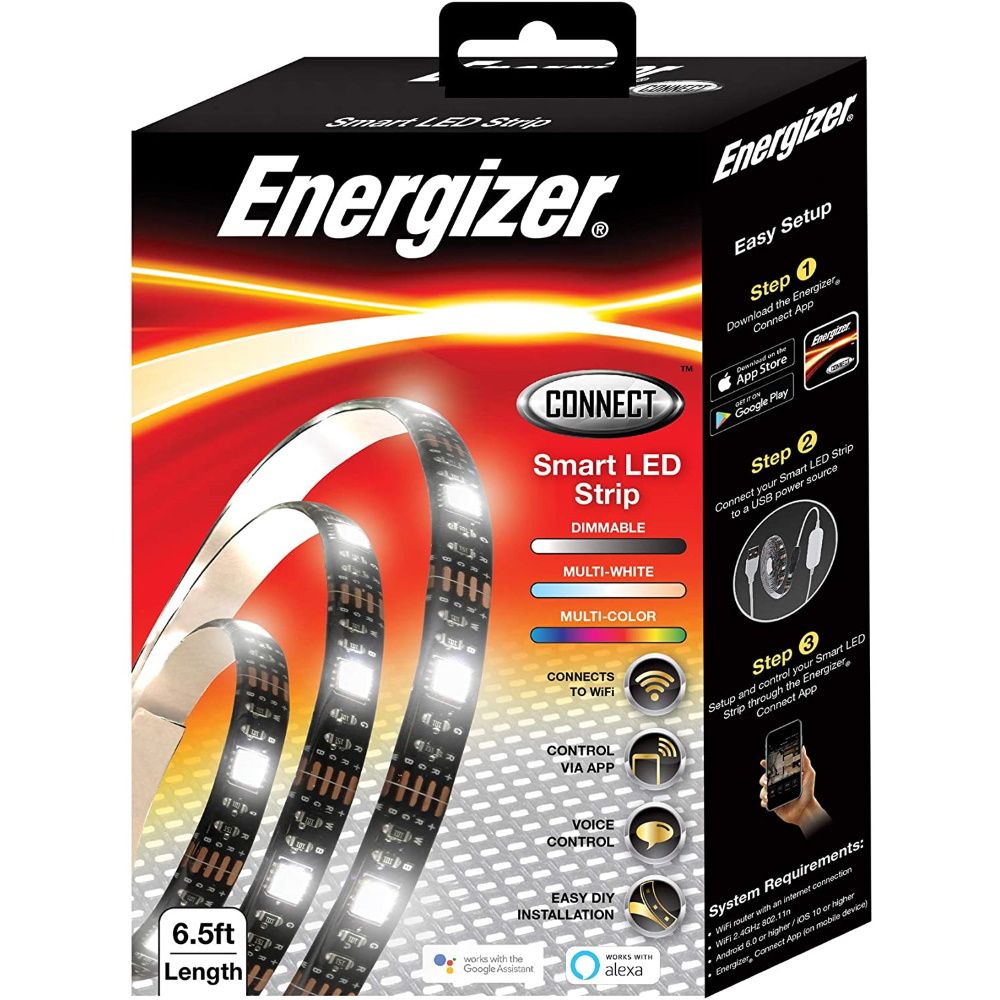
-
A bed occupancy sensor. 4 50kg load cells, an HX711, and a Wemos D1 to make a wifi scale that rests on a bed slat under the boxspring.
Given the placement and weight distribution it doesn't turn the bed into a huge bath scale, but definitely accurate enough to use the deltas to estimate if there is someone in the bed. I can also tell when our 12lb (5.5kg) dog is on the bed.
I have rules in openhab to turn the overhead fan on and off. Also disables some TTS notifications if somebody is in bed.
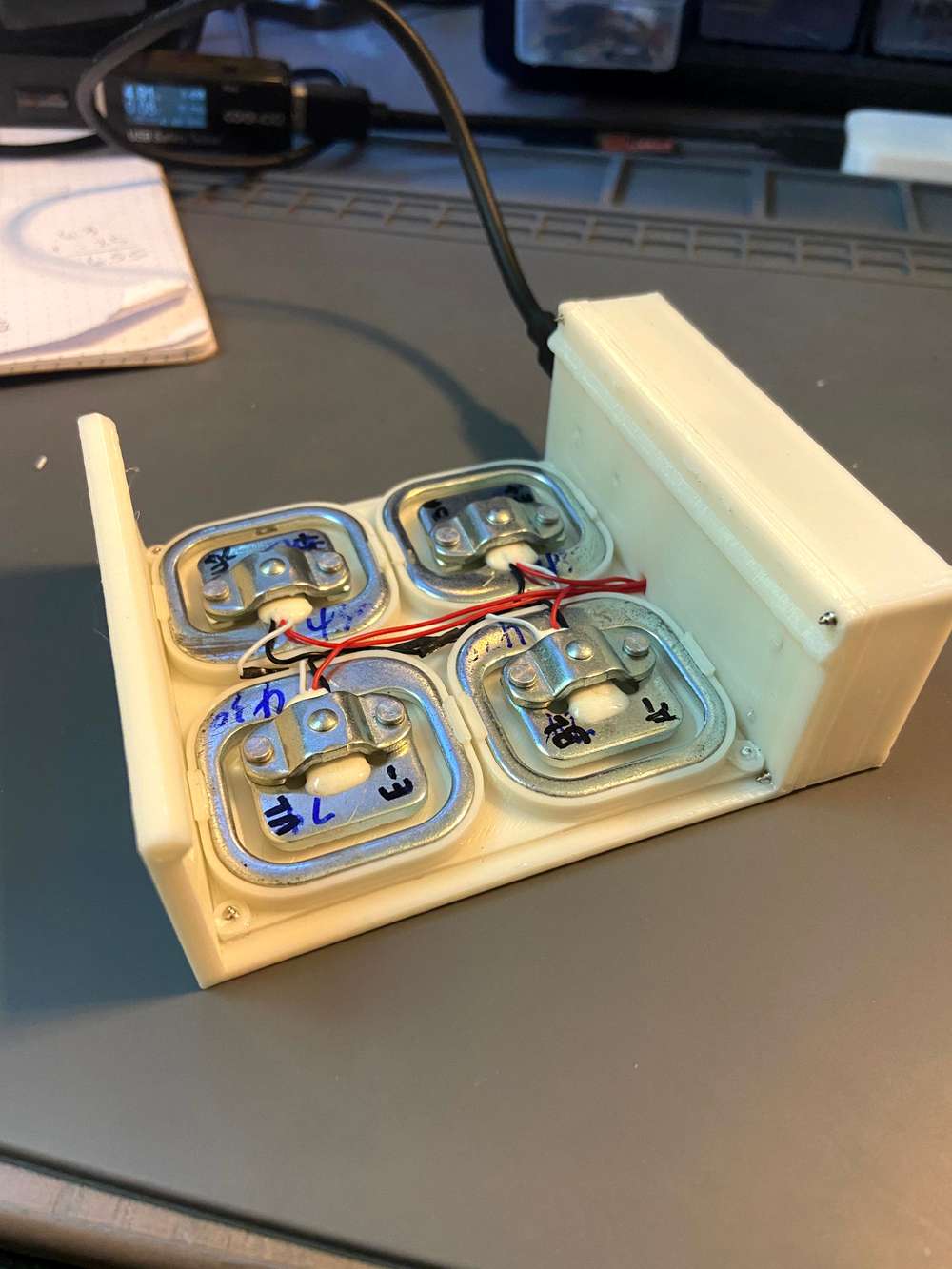
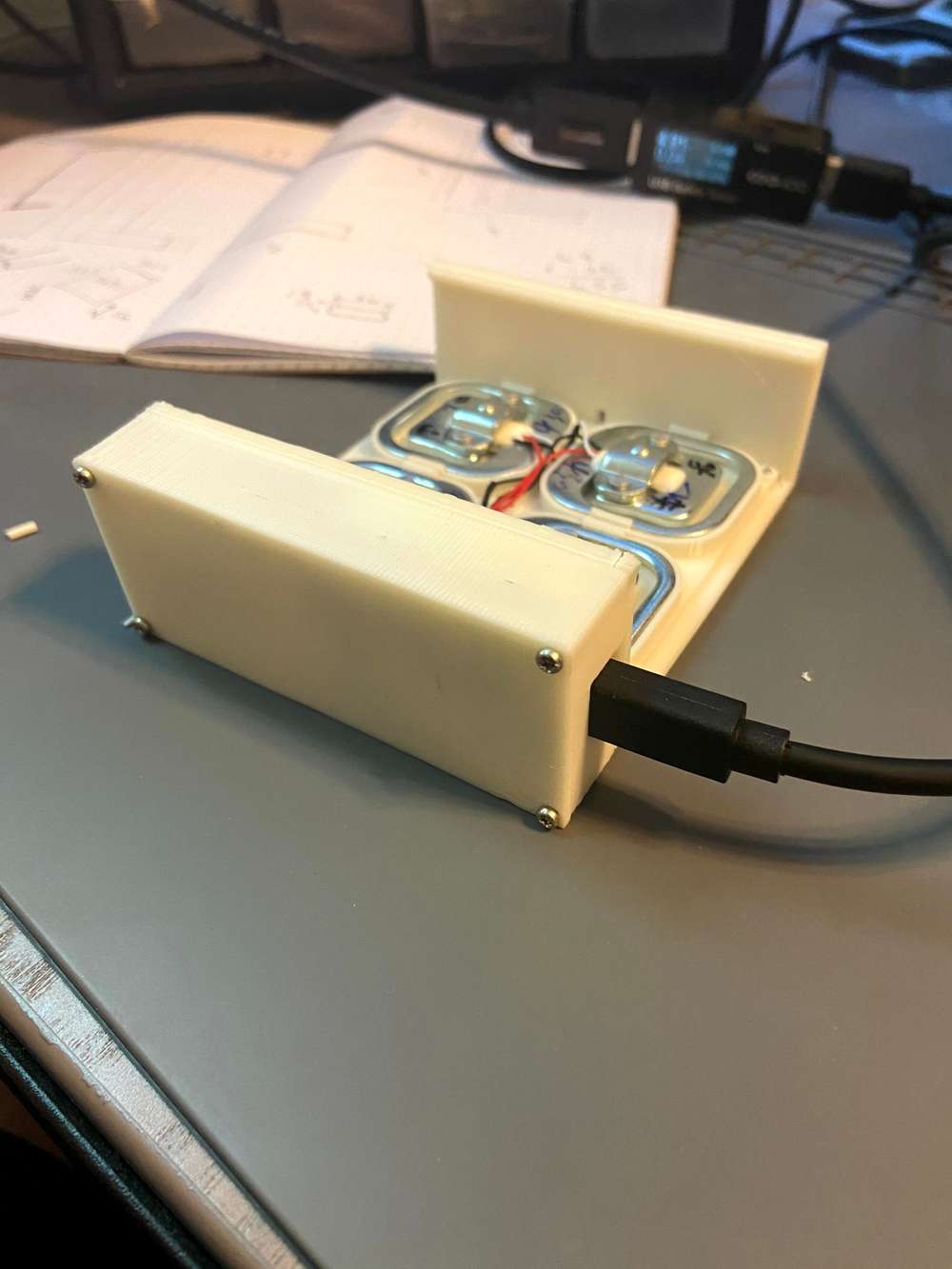
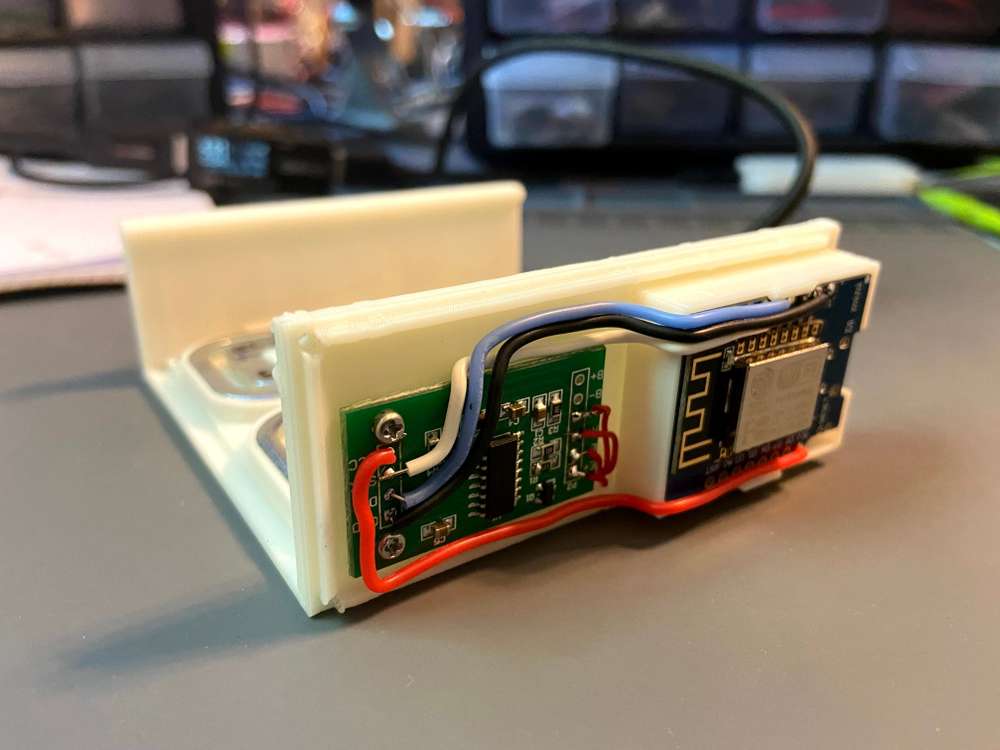
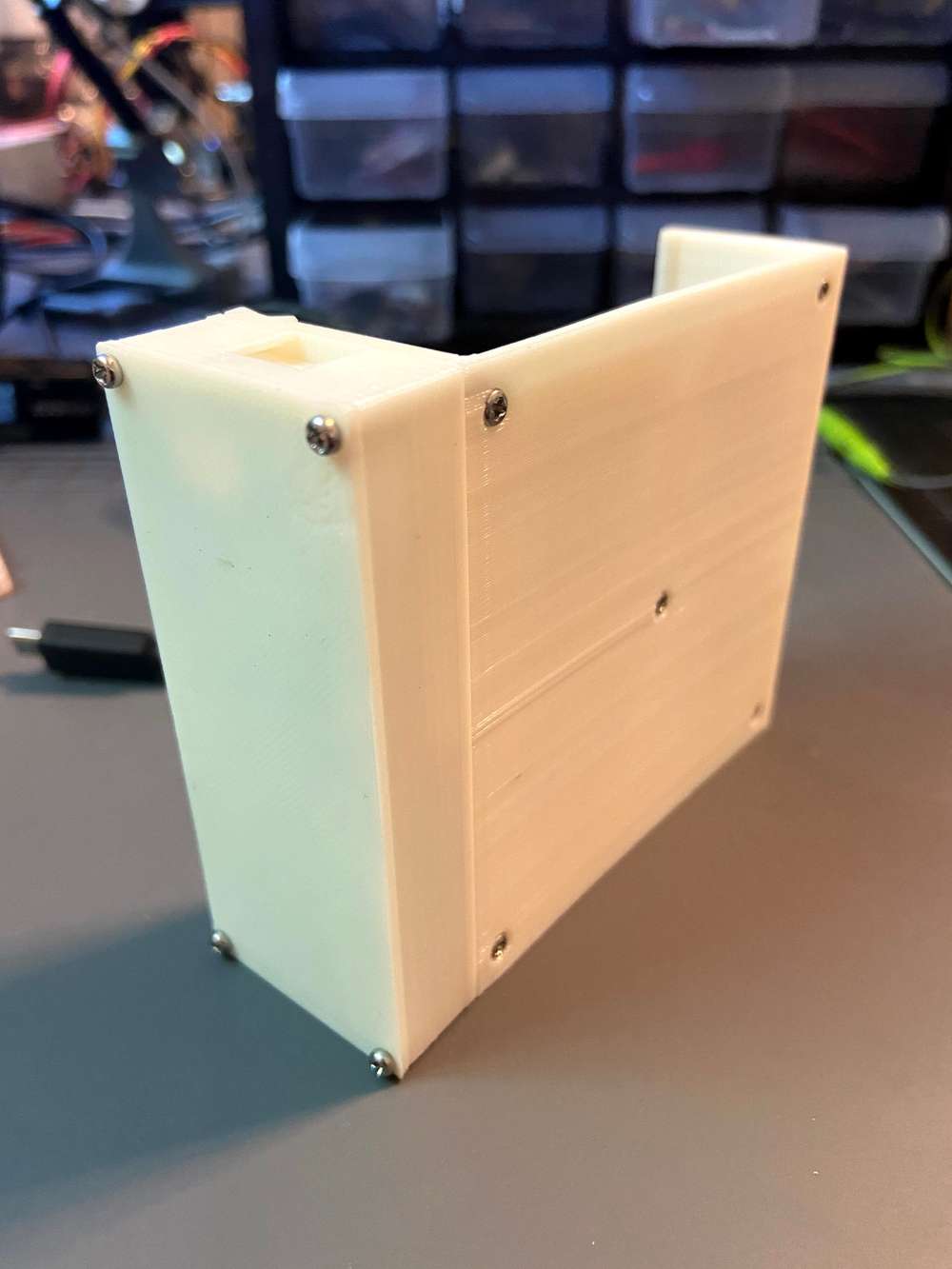
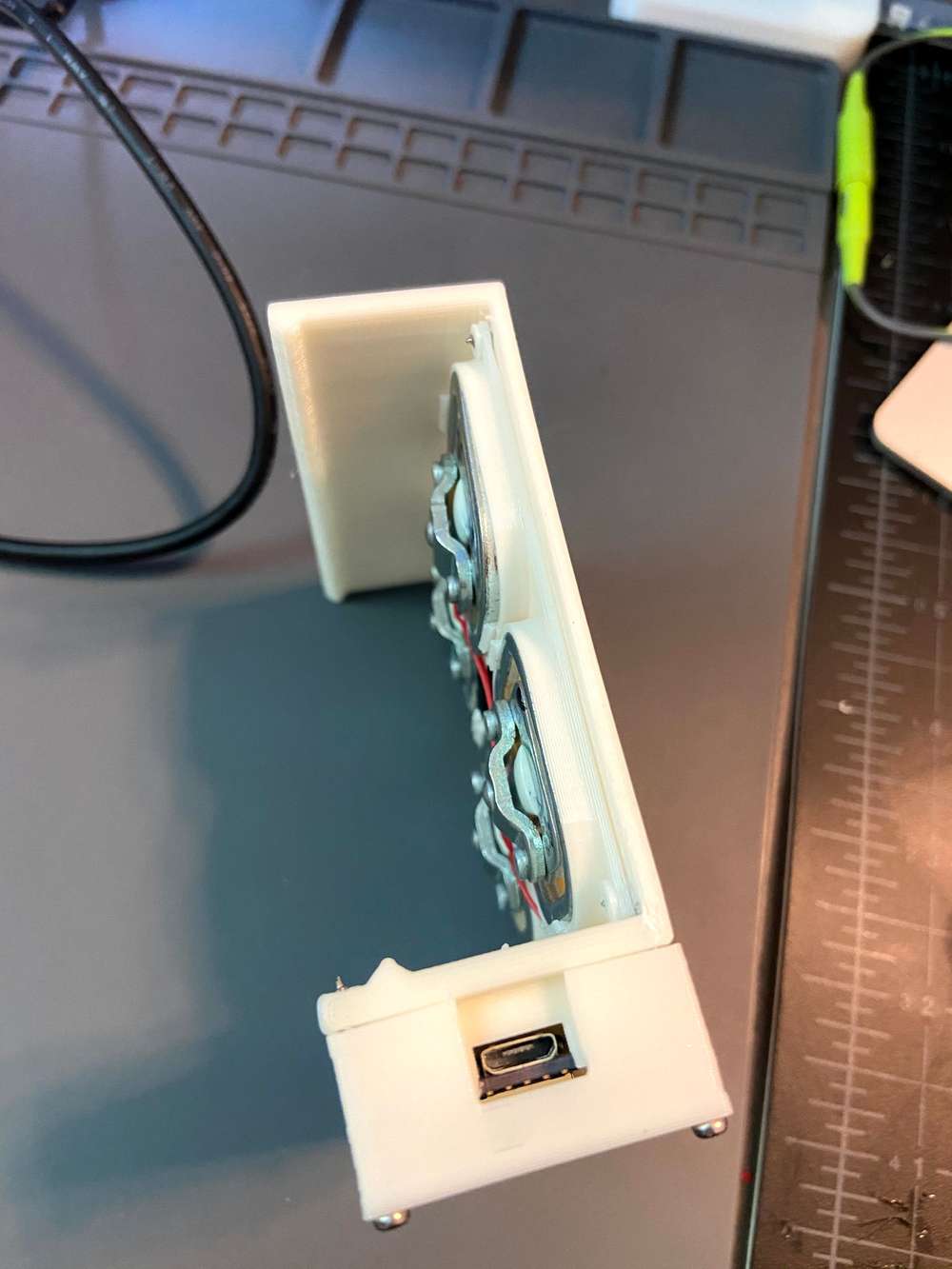
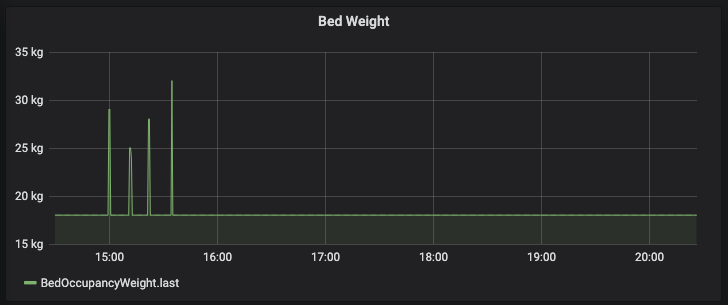
-
thanks to assistance of some of the people here i now have up and running a front gate controller for my double front gates (Solar powered)
now have a node that monitors the batteries, knows if the gate is open or closed and has a relay for activating the gate
-
My new arduino project wireless weather mini station with electronic ink display 2.9 inches (GDEH029A1), very low power consumption,compact size, housing with magnets. The device can use si7020 / 21, sht20 / 21, HTU20/21D or BME280 sensors. Use the MINEW MS50SFA RF module with nRF5210, nRF52811, nRF52832 chips, or the EBYTE E73 module with nRF52840 and nRF52833 chips. Soon to be available on openhardware.io

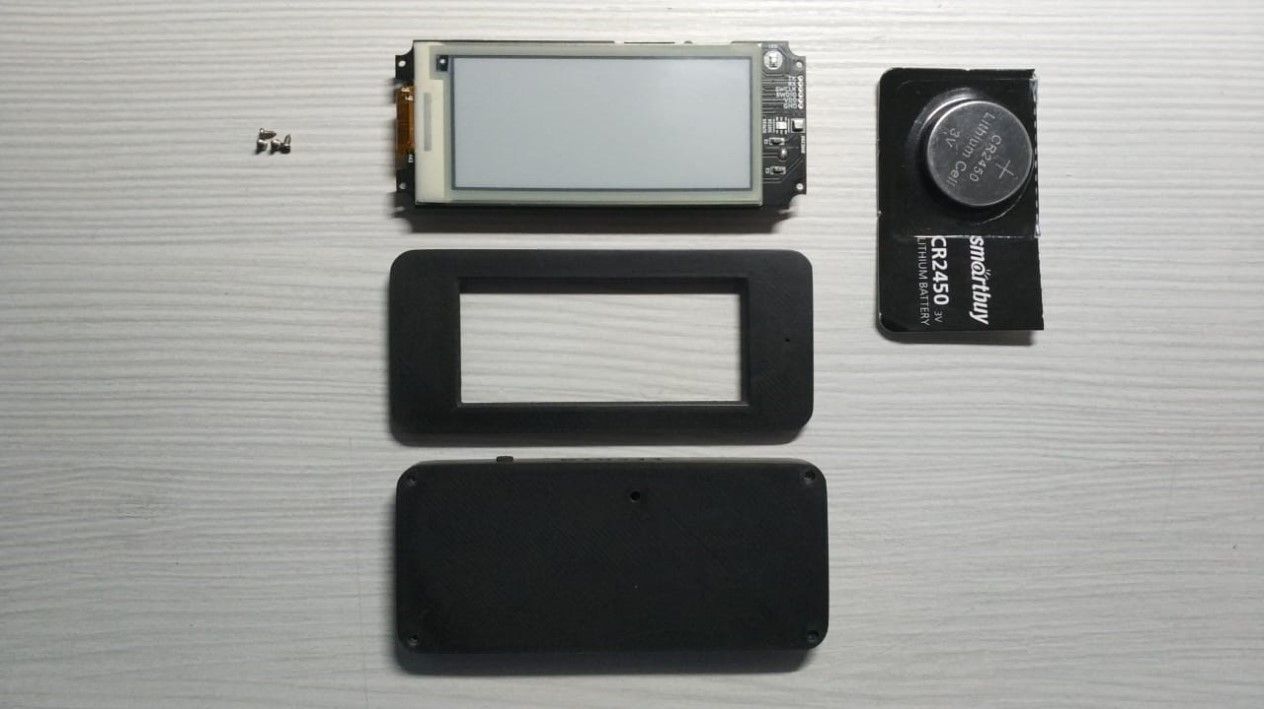
Video: DIY Mini Weather station with an electronic ink display 2.9 Inch ( GDEH029A1 )
-
Prototype of room sensor for stardard electric box
- arduino pro mini 3.3V
- sx1276 radio
- bme680
- 2x1.5V AA battery holder
- battery measuring circuit according to https://www.mysensors.org/build/battery
- ABB Tango cover (drilled)
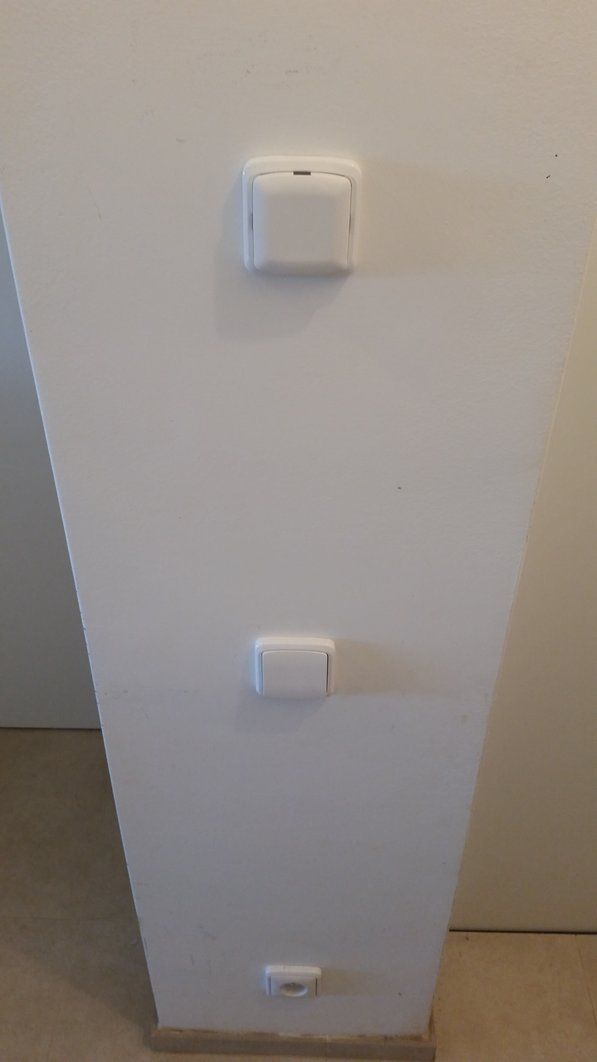
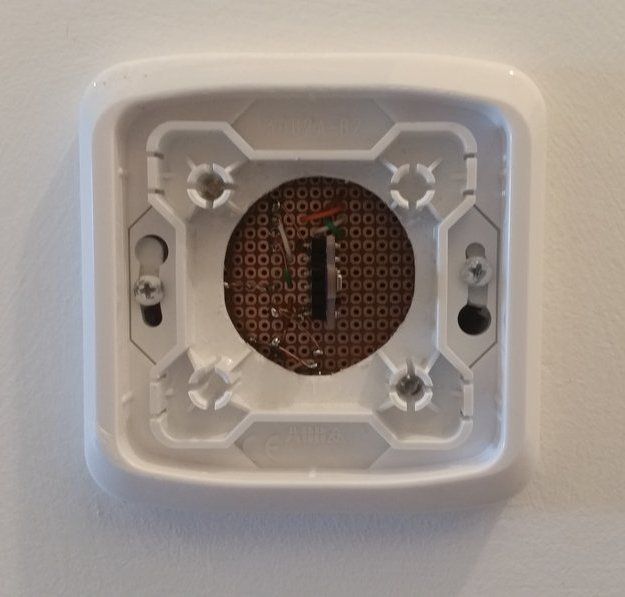
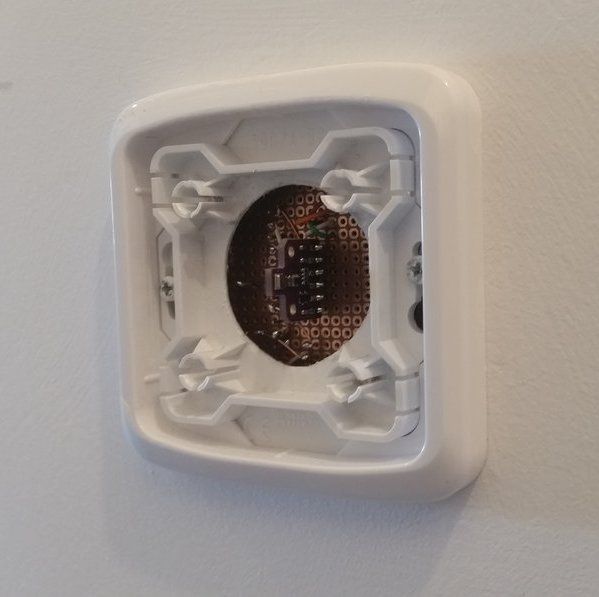
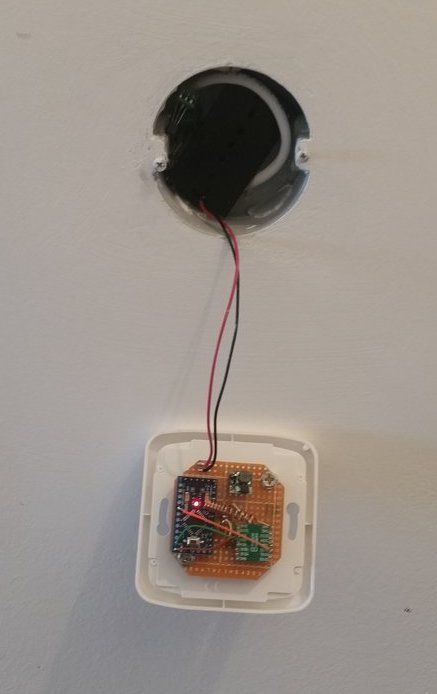
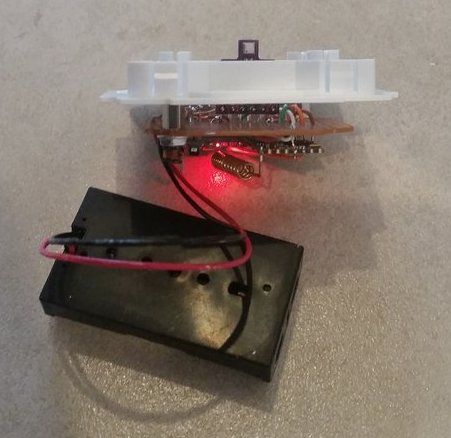
Cover is not fully closed to allow air circulation. But I would preffer some method to drill holes/grill into it - any tips to get decent looking result?
-
Prototype of room sensor for stardard electric box
- arduino pro mini 3.3V
- sx1276 radio
- bme680
- 2x1.5V AA battery holder
- battery measuring circuit according to https://www.mysensors.org/build/battery
- ABB Tango cover (drilled)





Cover is not fully closed to allow air circulation. But I would preffer some method to drill holes/grill into it - any tips to get decent looking result?
@tssk said in What did you build today (Pictures) ?:
any tips to get decent looking result?
- Drill at low RPM so you don't melt the plastic.
- If you're going to drill a bunch of holes to make a kind of grill, then preferably use a CNC (even a cheap one!) to drill them so that they don't look hodgepodge.
-
Prototype of room sensor for stardard electric box
- arduino pro mini 3.3V
- sx1276 radio
- bme680
- 2x1.5V AA battery holder
- battery measuring circuit according to https://www.mysensors.org/build/battery
- ABB Tango cover (drilled)





Cover is not fully closed to allow air circulation. But I would preffer some method to drill holes/grill into it - any tips to get decent looking result?
@tssk - really like your design! Well done.
-
@tssk - really like your design! Well done.
-
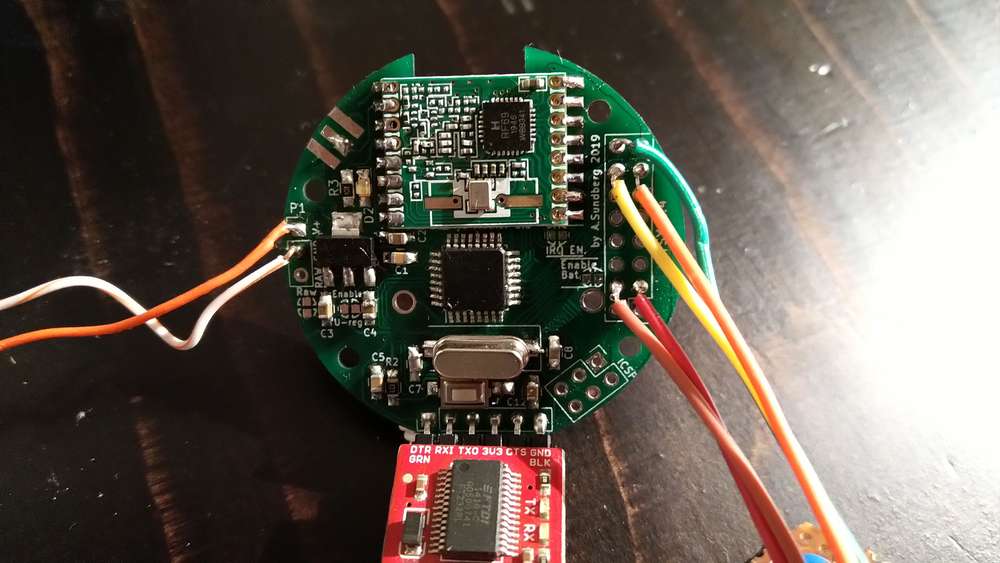
Today im testing and outdoor node in a new PCB, but I had mixed csk and ce on the radio (it's a dual radio PCB).
-
A bed occupancy sensor. 4 50kg load cells, an HX711, and a Wemos D1 to make a wifi scale that rests on a bed slat under the boxspring.
Given the placement and weight distribution it doesn't turn the bed into a huge bath scale, but definitely accurate enough to use the deltas to estimate if there is someone in the bed. I can also tell when our 12lb (5.5kg) dog is on the bed.
I have rules in openhab to turn the overhead fan on and off. Also disables some TTS notifications if somebody is in bed.






-
- At 50kg per cell, 4 would allow me to actually turn the bed into a huge scale if I decided to go down that route
- I don't believe these are intended to support a significant load for extended periods of time, they can permanently deflect. Given they always have the weight of a king size mattress + boxspring, I wanted to distribute that as much as possible
-
Current issue: outdoor nodes random stops/disappears - maybe during the time when its high humidity, so trying to try some different approaches i read - this multisensor is getting painted with clear nail polish. Also this PCB is a new board im testing, that Im hoping to be the base for my "final" home automation nodes. Still in dev. but great possibilities!
